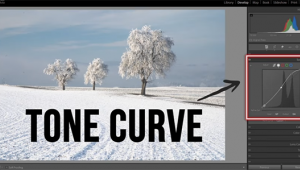Fun Photo Facts: Excerpts From “Pring’s Photographer’s Miscellany”

Agent Provocateur
The Minox subminiature camera was invented in 1936 by Walter Zapp, a German living in Estonia (this modern Estonian stamp celebrates Zapp’s original patent). Unable to get it manufactured locally, he eventually established production in neighboring Latvia, but during World War II the factory was overrun, once by German forces and twice by the Russians. Production resumed in former West Germany in 1948, by which time the Minox had become the preferred equipment of real or imagined espionage agents worldwide. Grasping the attached measuring chain, the spy in a hurry could extend it to touch the secret item, shoot without using the viewfinder, and be assured of a sharp copy of, for example, an A4 or 8 1/2 x 11 inch document. The Minox uses specially cut, unsprocketed film which is advanced each time the case is closed, an action which also protects the viewfinder and lens.

The Human Mosaic
During World War I, the propaganda arm of the US military was fortunate in having the services of Arthur Mole, an immigrant English commercial artist. Mole had first established the human mosaic idea in a biblical context, marshaling fellow-parishioners to represent the shapes of religious symbols. For the US army, he operated on a much larger scale, viewing the scene on a glass plate carrying the design sketch, and directing his assistants from an 80-foot tower as they laid out white string guides for the troops who would arrive later. There are 30,000 men in this picture.
“I was photographing the D-Day landings when a voice said, ‘If you take one more step back, you’ll blow us both to smithereens. There’s a mine behind you!’ It’s so easy to forget reality when you are holding a camera to your eye. The rest of the world doesn’t seem to exist.”
Slim Hewitt

Stay Away From The Window
An unusual instant-picture camera appears in an episode of the 1960s US television series The Twilight Zone. A minute or so after making an exposure, it rings a bell and produces a print. So far, so unexceptional. But wait, the print it produces shows what will happen five minutes into the future.
Following an antique-shop robbery, it falls into the hands of three thieves, two men and a woman, who use its remarkable properties to photograph a race-track winners’ board. Armed with the future winning numbers, they smugly bet on the foregone conclusion.
Back in their hotel room, as they count their substantial winnings, and speculate on the better life to come, an argument develops between the two men. During a struggle, another picture is inadvertently taken. It shows their female accomplice screaming in panic. They continue to fight and then both fall to their deaths from the window, as the woman duly screams in panic, in a pose strongly reminiscent of that in the prophetic picture. Having calmed down, she delights in contemplating the cash, and decides to take a picture out of the window of the men lying dead on the ground, “for posterity.”
A nefarious hotel waiter with a wavering French accent, intent on stealing the money, appears in the room and points out to her that the second picture shows more than two bodies in the courtyard. She rushes to the window in amazement, trips over an inconvenient wire, and plunges immediately to her death. The jubilant waiter collects up the cash, and is idly re-examining the picture, when he realizes to his horror that there are actually FOUR bodies lying dead outside, and that his is the fourth corpse. Though it might have been wiser to sit in a chair and take stock of the situation, he also contrives a fatal fall from the window. Cue staccato violin music. Fade.
“Always point your finger at the chest of the person with whom you are being photographed. You will appear dynamic. And no photo editor can crop you from the picture.”
Ken Auletta
Opposing Elements
Joseph Petzval’s family intended him to be a shoemaker, but he narrowly escaped this pedestrian fate for a career as a physicist. Born in Upper Hungary (now Slovakia), Petzval was eventually appointed to the chair of mathematics at the University of Vienna.
In 1840 he designed a new photographic lens, the first to be devised mathematically rather than by trial-and-error. Its use of two elements cemented together (a doublet) was not novel, but its much larger working aperture made it an instant success, especially with portrait photographers. The typical exposure for a Daguerrotype was reduced from several minutes to a few seconds. Before long, Petzval had a major dispute with Peter Voigtländer, to whom he had licensed the actual manufacture of the lens, and began to look for other business partners.
Petzval’s next design, the Orthoscope, though properly patented this time, was pirated and renamed by the extremely persistent Voigtländer. Petzval’s new partners, unable to compete with Voigtländer’s superior industrial and marketing expertise, duly went bankrupt. Petzval’s misfortunes culminated in a burglary in 1859 during which he lost all his manuscripts, including a major unpublished work on optical science. Understandably, he gave up the study of optics in favor of acoustics. However, in the 21st century, a Petzval lens, with its sharply focused central area and soft edges, is still a coveted device among large-format and ancient-process photographers, while the name of Voigtländer now exists only as a licensed brand.
“I have often thought that if photography were difficult in the true sense of the term—meaning that the creation of a simple photograph would entail as much time and effort as the production of a good watercolor or etching—there would be a vast improvement in total output. The sheer ease with which we can produce a superficial image often leads to creative disaster.”
Ansel Adams

Where To Buy
Pring’s Photographer’s Miscellany is published by Ilex ($12.99, ISBN: 978-1-907579-43-1) and is available online and wherever good books are sold.
- Log in or register to post comments
















































